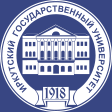List of issues > Series «Biology. Ecology». 2024. Vol 49
On Pollution of Agricultural Lands by Household Solid
Waste (Irkutsk Region, East Siberia)
Kaminskaya Anna Vladimirovna, Postgraduate, Irkutsk State University, 1, K. Marx st., Irkutsk, 664003, Russian Federation, e-mail: kaminskaya.anyaka@yandex.ru
Lopatovskaya Olga Gennagievna, Doctor of Science (Biology), Professor, Irkutsk State University, 1, K. Marx st., Irkutsk, 664003, Russian Federation, e-mail: lopatovs@gmail.com
Kaminskaya A.V., Lopatovskaya O. G. On Pollution of Agricultural Lands by Household Solid Waste (Irkutsk Region, East Siberia). The Bulletin of Irkutsk State University. Series Biology. Ecology, 2024, vol. 49, pp. 87-94. https://doi.org/10.26516/2073-3372.2024.49.87 (in Russian)
Aleksandrova I.A. K voprosu ob otsenke kachestva zemel selskokhozyaistvennogo naznacheniya v Irkutskoi oblasti [On the issue of assessing the quality of agricultural land in the Irkutsk region]. Aktualnye problemy ekspluatatsii mashinno-traktornogo parka, tekhnicheskogo servisa, energetiki i ekologicheskoi bezopasnosti v APK [Actual problems of operation of the machine and tractor fleet, technical service, energy and environmental safety in the agro-industrial complex]. Irkutsk, 2007, pp. 226-230.
Ivanova Yu.S. Ekologo-geohimicheskaya opasnost lokalnykh nesanktsionirovannykh svalok na territorii g. Ul'yanovska [Ecological and geochemical danger of local unauthorized landfills on the territory of Ulyanovsk City]. Ul'yanovskii mediko-biologicheskii zhurnal [Ulyanovsk Medical and Biological Journal], 2011, no. l, pp. 136-141.
Itogovyi doklad ob osnovnykh rezul'tatakh deyatelnosti Federal'noi sluzhby po veterinarnomu i fitosanitarnomu nadzoru za 2023 g. [Final report on the main results of the activities of the Federal Service for Veterinary and Phytosanitary Surveillance for 2023]. Rosselkhoznadzor. 2023. Available at: https://fsvps.gov.ru/files/itogovyj-doklad-ob-osnovnyh-rezultatah-dejatelnosti-federalnoj-sluzhbypo-veterinarnomu-i-fitosanitarnomu-nadzoru-za-2023-god/
Kolichestvo nesanktsionirovannykh svalok otkhodov [Number of unauthorized waste dumps]. Rosprirodnadzor. Statisticheskaya otchetnost [Rosprirodnadzor. Statistical reporting]. 2024. Available at: https://rpn.gov.ru/open-service/analytic-data/statistic-reports/unauthorized-landfill (date of request: 03.12.2024)
Klassifikatsiya i diagnostika pochv Rossii [Klassifikatsiya i diagnostika pochv Rossii]. Smolensk, Oikumena Publ., 2004. 342 p. (in Russian)
Lopatovskaya O.G., Sugachenko A.A. Melioratsiya pochv. Zasolennye pochvy [Soil reclamation. Saline soils]. Irkutsk, Irkutsk St. Univ. Publ., 2010, 101 p.
Uglanov I.N., Skuratovsky A.A., Lopatovskaya O.G. Pochvenno-meliorativnyi fond i meliorativnoe raionirovanie Irkutskoi oblasti [Soil reclamation fund and reclamation zoning of the Irkutsk region]. Melioratsiya pochv [Soil reclamation]. Irkutsk, Irkutsk St. Univ. Publ., 1991, pp. 94-120.
Drall J.K., Rautela R., Jambhulkar R., Kataria A.K., Kumar S. Effect of heavy metals contamination due to leachate migration from uncontrolled dumpsites: A comprehensive analysis on soil and groundwater. JEM, 2024, vol. 373, art. 123473. https://doi.org/10.1016/j.jenvman.2024.123473
